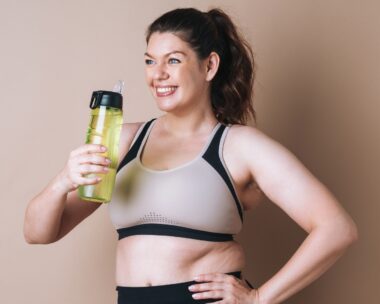Every year, more than 400 New Zealanders die of skin cancer. It’s a cancer that is largely preventable with rigorous checking and sensible sun protection. We know that spending time lapping up the sun’s rays can lead to premature ageing and skin cancer. Yet many of us still go out in the sun unprotected.
“People are aware of the Slip, Slop, Slap, and Wrap campaign, but compliance of sunscreen use and sun protection remains lower than desired,” says Dr Nicholas Stewart from The Skin Hospital. “The incidence of skin cancers, including melanomas, continues to rise every year.”
Melanoma
In New Zealand, more than 90 per cent of all skin cancer cases are attributed to excess sun exposure. It’s the most common cancer for those aged 15 to 39, making up 20 per cent of all cancer cases in that age group. “Melanoma is the most dangerous form of skin cancer,” says Professor Sanchia Aranda, the Chief Executive of Cancer Council Australia. “Melanoma can appear as a new or existing spot, freckle or mole that changes in colour, size or shape. It can grow anywhere on the body – not just areas exposed to the sun.”
Marie Seery knows this only too well. In early 2014, she noticed that a mole – one she’d had from birth – was growing. “I went to my GP to have it checked out,” she recalls. “I was assured the changes were harmless and there was no medical reason to remove it.”
Six months later, in October 2014, Marie insisted on getting the mole removed. “I couldn’t shake the feeling something just wasn’t right,” she says. A few days later, she received a phone call asking her to return. The diagnosis wasn’t good – she had melanoma. “My skin cancer developed in a mole I’d had since birth, which was on my torso,” says Marie. “I was shocked. I didn’t feel sick. To go from being a healthy 32-year-old to being a 32-year-old with cancer in the space of a day… it is hard to take in.”
Having a family member diagnosed with skin cancer increases your risk, but anyone can develop it. “There is a history of cancer in my family,” says Marie, “but not skin cancer. I do have fair skin and have suffered sunburn on a few occasions, but for the most part, I used sun cream. And I’ve never used a sunbed, which is a significant risk factor for melanoma.”
A week after the diagnosis, Marie saw a surgeon. “I needed surgery to remove additional tissue from the original melanoma site [a wide-area excision] and a biopsy, to check if the cancer had spread,” she says. “Unfortunately, cancer was detected through the sentinel node biopsy. On December 2, I had more surgery to remove all the lymph nodes from my right groin and pelvis. I was in hospital for five days and off work for six weeks.”
Marie is in a trial to see if a new drug can help reduce the chances of the cancer returning. “The chances of re-occurrence are high in the first two years and ‘traditional’ cancer treatments like chemotherapy are not effective,” she says. “I think it is sometimes dismissed as just skin cancer. It is not as simple as just ‘cutting it out’. My cancer was stage 3 before I even realised anything was wrong. And I will have to have check-ups for the rest of my life.”
Marie’s message is simple – “prevention is better than cure. Slip, slop, slap. If you feel something isn’t right, it probably isn’t.”
Non-melanoma cancers
Non-melanoma skin cancers are the most common cancers in New Zealand, but most are not life-threatening if treated. “Left untreated, these cancers may require extensive surgery that can be disfiguring, especially on the face, head or neck,” says Professor Aranda. “There are two main types. Basal cell carcinoma can look like small, round or flattened spots that are red, pale or pearly. Some are scaly like eczema. These can be small on the surface, but can grow deep. These tend not to spread [metastasise]. Squamous cell carcinomas are usually scaly red areas that may bleed easily, ulcers or non-healing sores that are often painful, especially when touched. These cancers can spread to other parts of the body.”

How to check your skin
“Skin cancer is one of the few cancers that can be identified with the naked eye,” says Dr Nicholas Stewart. “Look at your skin [or your partner’s or family member’s skin] and take note of all the spots, from freckles and moles to age spots. The first sign of cancer is usually the appearance of a new spot that stands out from other spots, or a change in an existing freckle or mole – the so-called ‘ugly duckling sign’.”
Look out for:
A Asymmetry (a mole that is not even in shape, contours and colouring).
B Border (irregular, jagged borders).
C Colour (such as brown, red, white or black).
D Diameter (greater than 6mm).
E Evolution (a mole that rapidly changes in shape, size, thickness or colour).
Why SPF 50+?
In the past few years there has been a move towards SPF 50+ sunscreens. This is because the Therapeutic Goods Administration announced a new standard for sunscreens in November 2012, increasing the maximum sun protection factor (SPF) from 30+ to 50+.
Professor Sanchia Aranda says the Cancer Council recommends using a higher protection sunscreen, but this doesn’t mean you should be complacent.
“There is a myth that if you use an SPF 50+ you can stay out in the sun longer or not reapply as often – that isn’t the case,” she says. “SPF 30+ sunscreens filter about 96.7 per cent of UV radiation, SPF 50+ sunscreens provide only marginally better protection at 98 per cent and you still need to reapply every two hours or after swimming, sweating or towel drying.” Dr Nicholas Stewart says many of us are too frugal with our creams.
“Often people apply sunscreen so thinly that though they are using a SPF 50+, it is only achieving the protection of an SPF 10-15,” he says. “To cover the whole body, use 35ml to 50ml of sunscreen”




